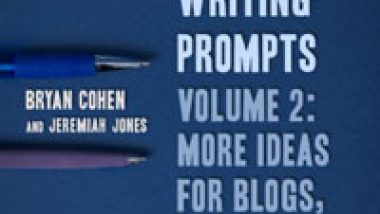The following post is a reprint of a report I offered many years ago while promoting my Directory of Book Printers.
With the new age of digital printing, PDFs or Postscript files, ebooks, print-on-demand, etc., some of these points are probably not as important as they once were. That’s good.
1. Minimize editorial changes. Try to make all your editorial changes before you send your copy to the typesetter. Making changes after your manuscript has been typeset will cost you at least two to three times as much.
2. Use camera-ready artwork (line drawings and other artwork that require no halftones) rather than photographs wherever practical. Each halftone costs $10 to $40 in additional prep costs.
3. Use bleeds only when necessary. Bleed pages require more set-up time for the presses and may also require larger sheets of paper. More paper, more expense.
4. Present clean copy to the typesetter (or page-layout person). Clean copy allows any typesetter to work faster, resulting in lower typesetting costs (or page layout costs).
5. Prepare your camera-ready copy so that all pages can be shot using the same camera setting. Don’t add in reductions or enlargements. Avoid extra camera work whenever possible. In today’s electronic age, you might not have to deal with camera-settings, but you will have to deal with PDF or Postscript standards when sending files to layout people or printers.
6. No close registrations. When doing two-color or three-color printing, stay away from close registrations. They require extra set up time – and can result in higher rejection rates as well.
7. Two-color effects from one color – You can obtain a two-color effect on your book’s cover by using screens, dropouts, and reverses. We used all three techniques on the cover of the second edition of the Directory of Short-Run Book Printers. As a result, we save hundreds of dollars over the costs of a four-color cover. [Note: I’m not sure this as true today with electronic layout and set-up.]
8. A lighter weight paper can save you money both for the cost of the stock itself and in postage for shipping your book. Many 50 lb. or 55 lb. papers are now as opaque and as strong as 60 lb. papers.
9. Seek the help of your printers in cutting costs. Talk to them early in the planning of the layout and design of your books. They may be able to suggest minor changes in your specs that will save you money without affecting the quality or feel of your books.
10. Don’t wait until the last minute. Rush jobs always seem to cost more money – overtime charges, shipping charges, mistakes, miscommunications, etc.
11. Avoid special requests – odd sizes, unusual papers, multiple screen effects, extra colors, etc. – unless they are essential for the character or content of you book. Extras cost extra.
12. Create books in signatures. Design your books to fit the press you’re going to use. What is the standard, most efficient signature for the press you will be using. Keep your book a multiple of that signature count.
13. Gang-run your books. If you can print more than one title at the same time that has the same basic size (e.g., 6×9) and thickness, your printer will often give you a break in the cost, because the set-up time for the second book should be less.
14. Pay your bills on time. Take advantage of any discounts for paying early. If you gain a reputation as a reliable payer, you’ll get better quotes from printers, especially during their quiet times.
15. Query at least five to ten printers on every book. Since book printers tend to specialize in certain sizes, bindings, or quantities, the same printer won’t always give you the best or lowest price quote.
A final thought: The lowest price is not always the best bargain. Don’t sacrifice quality, service, or delivery to price. A low-priced, poor quality production job can cost you money in lost sales. A late delivery can also cost you sales.

About John Kremer
John Kremer is author of 1001 Ways to Market Your Books, the Relationships Matter Marketing program, and many other books and reports on book marketing, Internet marketing, social media, and book publicity. -- John Kremer on Book Marketing.

